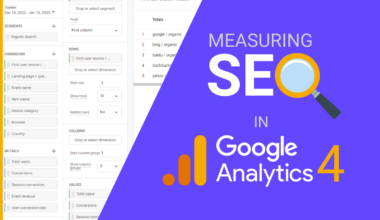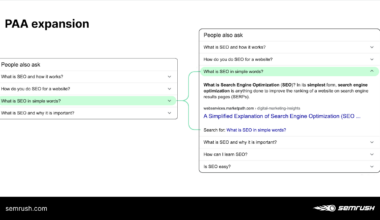Introduction to Call-to-Actions (CTAs)
Call-to-Actions (CTAs) are an essential component of any website or digital marketing campaign. CTAs are designed to encourage visitors to take specific actions on your website, such as filling out a form, subscribing to a newsletter, or making a purchase. The primary goal of CTAs is to convert website visitors into customers.
CTAs are typically placed in strategic locations on a website, such as at the end of a blog post, on a landing page, or in the header or footer of a website. They are usually designed to stand out from the rest of the website’s content, using bold colors, contrasting fonts, and other design elements to draw attention to them.
CTAs are essential for SEO because they help to drive engagement and conversions on your website. When visitors take action on your website, it signals to search engines that your website is relevant and useful to users. As a result, search engines are more likely to rank your website higher in search results, which can lead to increased traffic and more conversions.
There are several different types of CTAs that can be used on a website, including:
- Button CTAs
- Text CTAs
- Image CTAs
- Form CTAs
Each type of CTA has its own unique advantages and disadvantages, and the best type of CTA to use will depend on your specific goals and target audience.
In order to optimize CTAs for SEO, it is important to follow best practices, such as:
- Using clear, concise language
- Placing CTAs in strategic locations on your website
- Using contrasting colors and fonts to make CTAs stand out
- Testing different variations of CTAs to see which ones perform best
Measuring the effectiveness of CTAs on SEO can be done using tools such as Google Analytics, which can track the number of clicks and conversions generated by each CTA on your website.
In conclusion, CTAs are an essential component of SEO and should be used strategically on your website to drive engagement and conversions. By following best practices and measuring the effectiveness of your CTAs, you can optimize your website for SEO and improve your chances of success in the competitive online marketplace.
Importance of CTAs for SEO
CTAs are crucial for SEO because they help to improve website rankings on search engine result pages (SERPs). CTAs are designed to guide website visitors towards taking specific actions that can ultimately lead to conversions. When visitors take the desired action, it sends a strong signal to search engines that the website is providing valuable content and user experience, which can lead to higher rankings on SERPs.
CTAs also contribute to increasing click-through rates (CTR) and reducing bounce rates on a website. By providing clear and concise instructions to visitors on what to do next, CTAs make it easier for visitors to navigate and engage with a website. This, in turn, can lead to increased user engagement, longer session durations, and decreased bounce rates, all of which are important factors in SEO.
Another reason why CTAs are important for SEO is that they help to improve the overall user experience on a website. By providing visitors with clear and relevant calls to action, they are more likely to find what they are looking for on the website. This can lead to increased trust and credibility, which can translate into higher rankings on SERPs.
CTAs also allow website owners to track and measure the effectiveness of their SEO efforts. By using tools such as Google Analytics, website owners can analyze the performance of different CTAs and optimize them for better conversions. This can help to further improve website rankings and drive more traffic to the website.
In summary, CTAs are essential for SEO because they help to drive engagement, conversions, and improve user experience on a website. By using CTAs strategically and optimizing them for better performance, website owners can improve their website rankings on SERPs and achieve greater success in the online marketplace.
Types of CTAs and their impact on SEO
There are different types of CTAs that can be used on a website, and each type has its own impact on SEO. Here are some of the most common types of CTAs and their impact on SEO:
1. Button CTAs
Button CTAs are the most common type of CTA used on websites. They are usually placed in prominent locations, such as at the end of blog posts, in the header or footer of a website, or on a landing page. Button CTAs are effective because they are easy to see and click on, and they can be designed to stand out from the rest of the website’s content. They can have a significant impact on SEO by increasing user engagement and conversions on a website.
2. Text CTAs
Text CTAs are another common type of CTA that can be used on a website. They can be placed in the content of a website or in a sidebar, and they are usually designed to be short and concise. Text CTAs can be effective for SEO because they can be optimized with targeted keywords, which can help to improve website rankings on search engine result pages.
3. Image CTAs
Image CTAs are a type of CTA that uses images to encourage visitors to take specific actions on a website. They can be placed in the content of a website or in a sidebar, and they are usually designed to be eye-catching and attention-grabbing. Image CTAs can have a positive impact on SEO by increasing user engagement and reducing bounce rates.
4. Form CTAs
Form CTAs are a type of CTA that encourages visitors to fill out a form on a website. They are usually placed on landing pages or in the sidebar of a website. Form CTAs can be effective for SEO because they allow website owners to collect valuable information from visitors, which can be used to further optimize the website for better performance.
In conclusion, the type of CTA used on a website can have a significant impact on SEO. By using a combination of different types of CTAs and optimizing them for better performance, website owners can improve their website rankings on search engine result pages and achieve greater success in the online marketplace.
Best practices for optimizing CTAs for SEO
Optimizing CTAs for SEO is a crucial aspect of any digital marketing strategy. Here are some best practices for optimizing CTAs for SEO:
1. Use Clear and Concise Language
Your CTA should be easy to understand and use simple language that is easy to read. Avoid using jargon or technical terms that may be unfamiliar to your audience.
2. Place CTAs in Strategic Locations on Your Website
The placement of your CTAs can have a significant impact on their effectiveness. CTAs should be placed in prominent locations on your website, such as at the end of a blog post, on a landing page, or in the header or footer of your website.
3. Use Contrasting Colors and Fonts to Make CTAs Stand Out
Using contrasting colors and fonts can make your CTAs stand out from the rest of your website’s content. This can help to draw attention to your CTAs and encourage visitors to take action.
4. Test Different Variations of CTAs to See Which Ones Perform Best
A/B testing is a powerful tool for optimizing CTAs for better performance. By testing different variations of CTAs, you can determine which ones are most effective at driving conversions and engagement on your website.
5. Use Action-Oriented Language
Your CTAs should use action-oriented language that encourages visitors to take specific actions. For example, “Sign Up Now” or “Download Your Free Guide” are action-oriented CTAs that can be effective at driving engagement.
6. Keep CTAs Simple and Easy to Use
Your CTAs should be simple and easy to use, with clear instructions on what to do next. Avoid cluttering your CTAs with too much information or too many options, as this can be overwhelming for visitors.
7. Optimize CTAs for Mobile Devices
With more and more people accessing the internet on their mobile devices, it is important to optimize your CTAs for mobile devices. This means making them easy to click on and ensuring that they are mobile-friendly.
In summary, optimizing CTAs for SEO involves using clear and concise language, placing CTAs in strategic locations, using contrasting colors and fonts, testing different variations of CTAs, using action-oriented language, keeping CTAs simple and easy to use, and optimizing CTAs for mobile devices. By following these best practices, you can improve the effectiveness of your CTAs and drive more engagement and conversions on your website.
Measuring the Effectiveness of CTAs on SEO
Measuring the effectiveness of CTAs on SEO is crucial for optimizing your website’s performance and improving your SEO rankings. Here are some ways to measure the effectiveness of CTAs on SEO:
1. Use Google Analytics
Google Analytics is a powerful tool for measuring the effectiveness of your CTAs on SEO. It provides valuable insights into the number of clicks, conversions, and user engagement generated by each CTA on your website. By analyzing this data, you can identify which CTAs are performing well and which ones need improvement.
2. Track Conversion Rates
Conversion rates are a key metric for measuring the effectiveness of your CTAs on SEO. By tracking the number of conversions generated by each CTA on your website, you can determine which CTAs are driving the most conversions and which ones need improvement.
3. Monitor Bounce Rates
Bounce rates are another important metric to monitor when measuring the effectiveness of CTAs on SEO. A high bounce rate can indicate that your CTAs are not effective at engaging visitors and encouraging them to stay on your website. By monitoring bounce rates, you can identify which CTAs need improvement and optimize them for better performance.
4. Use Heat Mapping and Click Tracking Tools
Heat mapping and click tracking tools can provide valuable insights into how visitors are interacting with your CTAs. They can help you to identify which CTAs are getting the most clicks and which ones are being ignored. By using this data, you can optimize your CTAs for better performance and improve your SEO rankings.
5. Test Different Variations of CTAs
A/B testing is a powerful tool for measuring the effectiveness of CTAs on SEO. By testing different variations of CTAs, you can identify which ones are most effective at driving engagement and conversions on your website. This can help you to optimize your CTAs for better performance and improve your SEO rankings.
In conclusion, measuring the effectiveness of CTAs on SEO is crucial for optimizing your website’s performance and improving your SEO rankings. By using tools such as Google Analytics, tracking conversion rates and bounce rates, using heat mapping and click tracking tools, and testing different variations of CTAs, you can optimize your CTAs for better performance and drive more engagement and conversions on your website.
Final Thought: CTAs as a crucial element of SEO success
Call-to-Actions (CTAs) are an essential component of SEO success. By guiding website visitors towards taking specific actions, CTAs can improve engagement, conversions, and overall user experience on a website. Optimizing CTAs for SEO involves using best practices such as clear and concise language, strategic placement, contrasting colors and fonts, testing different variations, action-oriented language, simplicity, and mobile optimization.
Measuring the effectiveness of CTAs on SEO is equally important. By using tools such as Google Analytics, tracking conversion rates and bounce rates, using heat mapping and click tracking tools, and testing different variations of CTAs, website owners can gain valuable insights into the performance of their CTAs. This can help to optimize CTAs for better performance and improve SEO rankings.
In conclusion, CTAs are a crucial element of SEO success. By following best practices and measuring the effectiveness of CTAs, website owners can improve engagement, conversions, and user experience on their website. This can lead to higher rankings on search engine result pages and greater success in the competitive online marketplace.






















